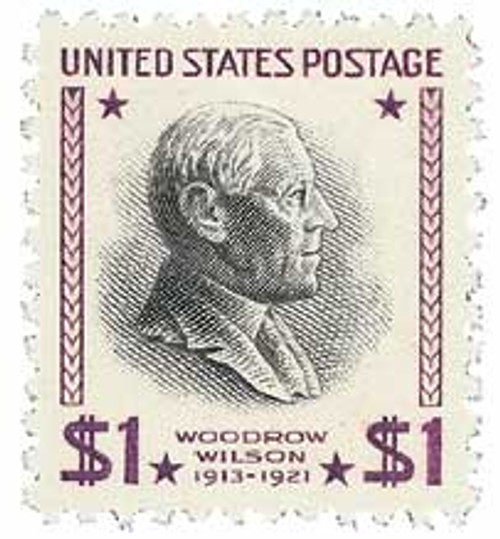
# 832b - 1938 $1 Woodrow Wilson, USIR watermark
U.S. #832b
$1 Wilson
1938 Presidential Series
Printed: 1951
City: Washington, DC
Quantity: 160,000 - 400,000 (estimate)
Printed by: Bureau of Engraving and Printing
Printing Method: Flat plate
Perforations: 11
Color: Purple and black
Get the ONLY U.S. Postage Stamp
Printed on Internal Revenue Paper
In 1938, the Presidential Series was printed for the first time. Sixteen years later, prominent U.S. stamp collector and dealer S. Kellogg Stryker discovered an unusual stamp error. He found a $1 Woodrow Wilson Presidential Series stamp with a United States Internal Revenue (USIR) watermark. Stryker was so fascinated with this stamp, he spent much of his career searching for more, eventually owning about 400 copies of U.S. #832b.
A Philatelic Mystery Even Today...
It turns out a small number of $1 Wilson stamps produced in 1951 were accidentally printed on USIR-watermarked paper. This paper was intended for U.S. Internal Revenue tax stamps only. How the paper was mistakenly used remains a mystery, as is the exact number of error stamps printed. Many were used and discarded, limiting the number available to collectors today.
The “Prexies” Were Created by Franklin Roosevelt –
The Stamp-Collecting President
The Presidential Series of thirty-two definitive or “regular” issue stamps featured U.S. Presidents in order of their terms in office, from George Washington through Calvin Coolidge. It was the first time all the deceased Presidents were represented in a set. We owe the idea for the series to America’s stamp-collecting President, Franklin D. Roosevelt.
During his time in the White House (1933 to 1945) President Roosevelt personally approved each of the more than 200 stamps issued. That was quite a feat, as during those 12 turbulent years America struggled through the Great Depression and fought in World War II. Yet FDR suggested stamp topics, designed stamps, rejected stamp proposals, encouraged changes in laws concerning picturing stamps in catalogs and albums, created many philatelic firsts and more.
Get a FREE Mount and Album Page
to Protect and Display Your New Stamp Treasure
A stamp as rare and sought-after as the #832b deserves a safe home. That’s why you’ll receive an album page and protective mount absolutely free. The album page will fit your Heritage or other Mystic-produced three-ring binder and features the story behind this stamp. The crystal-clear archival-quality mount will make the stamp details and colors “pop” and will make adding it to your new album page a breeze.
Birth Of Woodrow Wilson
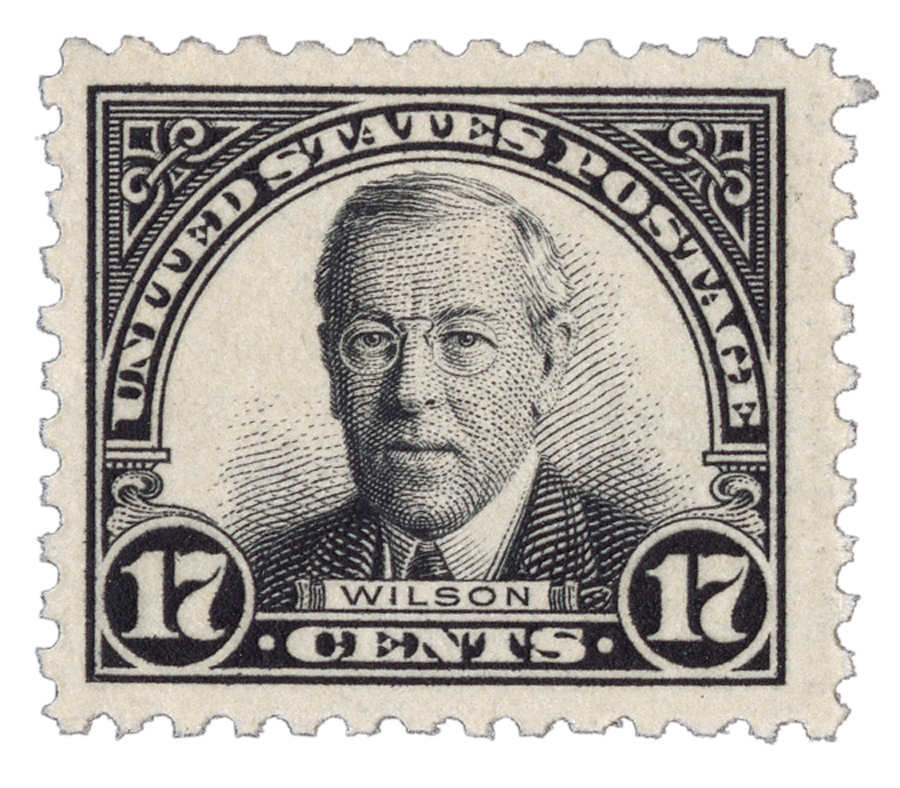
Thomas Woodrow Wilson was born on December 28, 1856, in Staunton, Virginia, the third of four children.
Wilson’s family fiercely defended the Confederate cause, but also set up a Sunday school for their slaves. Reportedly, one of Wilson’s earliest memories was hearing Robert E. Lee say that Abraham Lincoln had been elected and that war was coming.
Wilson attended Davidson College in North Carolina and then Princeton here took great interest in studying political philosophy and history. As a student at Princeton, Wilson served as speaker of the Whig Party, wrote for the Nassau Literary Review, organized the Liberal Debating Society, and coached another debating group.
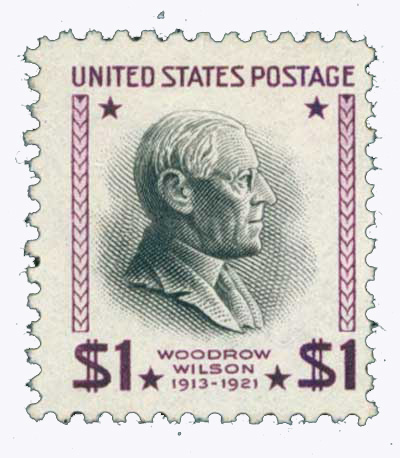
In 1882, Wilson passed the Georgia bar and opened his own law practice with a former classmate. He soon found the law practice was too competitive in the city and felt it was holding him back from his real aspirations to join politics. So in 1883, he entered Johns Hopkins University to study political science.
By 1886, Wilson had earned his PhD and briefly worked as a visiting lecturer at Cornell University. He went on to teach at Bryn Mawr College and Wesleyan University, where he coached football and started a debate team. In 1890, Wilson began teaching at Princeton. At that time, he also became the first lecturer of Constitutional Law at New York Law School. His stirring speech at Princeton’s 1896 sesquicentennial celebration was titled “Princeton in the Nation’s Service,” which became the university’s motto (and was later changed to “Princeton in the Nation’s Service and in the Service of All Nations”). In 1902, Wilson was promoted from professor to president of Princeton University. He took great joy in this role and made major reforms to the school.
With the support of the state’s Democratic Party, Wilson was elected Governor of New Jersey in 1910, winning by more than 49,000 votes. Within six months of taking office, he established state primaries, essentially removing party bosses from the presidential election process in the state. He also reformed the public utility commission and created workers’ compensation in the state.
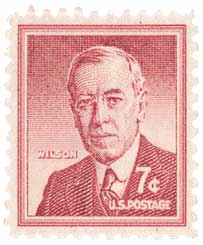
Quickly gaining national fame for his work as governor, Wilson sought the presidency in the election of 1912. He received his party’s nomination and campaigned promoting “New Freedom,” which promised to limit the federal government and fight monopolies. Wilson won the election with 41.8% of the popular vote and 435 electoral votes.
Wilson wasted no time instituting his “New Freedom” promises, addressing antitrusts, tariff reforms, and changes to banking and currency issues. President Wilson held the first modern press conference on March 15, 1913, and that year gave the first State of the Union address in person since 1801.
One of the first major issues Wilson tackled was the Federal Reserve. The resulting Federal Reserve Act of 1913 gave private banks control of the 12 regional Federal Reserve Banks but placed controlling interest in a central board selected by the President, with Senate approval. The plan was passed that December and went into effect in 1915.
Tariff reform came with the Underwood Tariff in 1913. Wilson raised public support for the tariff by denouncing corporate lobbyists, addressing Congress in person, and putting on a large ceremony when he signed the bill. The reduced revenue that resulted from the lower tariff was made up through a new federal income tax created by the 16th Amendment.
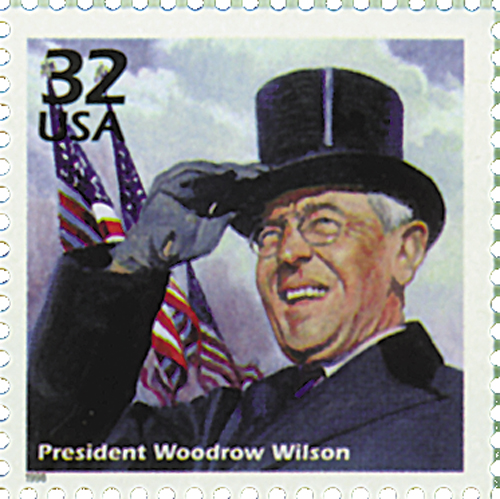
Wilson also managed to end the long-time battle over trusts. Wilson encouraged competition through the Federal Trade Commission, which mostly put an end to unfair trade practices. He also pushed for the passage of the Clayton Antitrust Act of 1914. That act made certain business practices illegal, including price discrimination and agreements that allowed retailers to handle products of other companies.
When war broke out in Europe in 1914, President Wilson declared neutrality and aimed to keep America out of the conflict. He offered his services as a mediator, but the Allies and Central Powers never responded. On the home front, he faced criticism from Republicans, who thought he should begin building up the US Army. But Wilson believed that such actions would only provoke war.
During the election of 1916, Wilson ran with the campaign slogan, “He kept us out of war.” But after winning his party’s nomination, he warned that German submarine warfare taking American lives would not be tolerated. In November, Wilson narrowly won reelection.
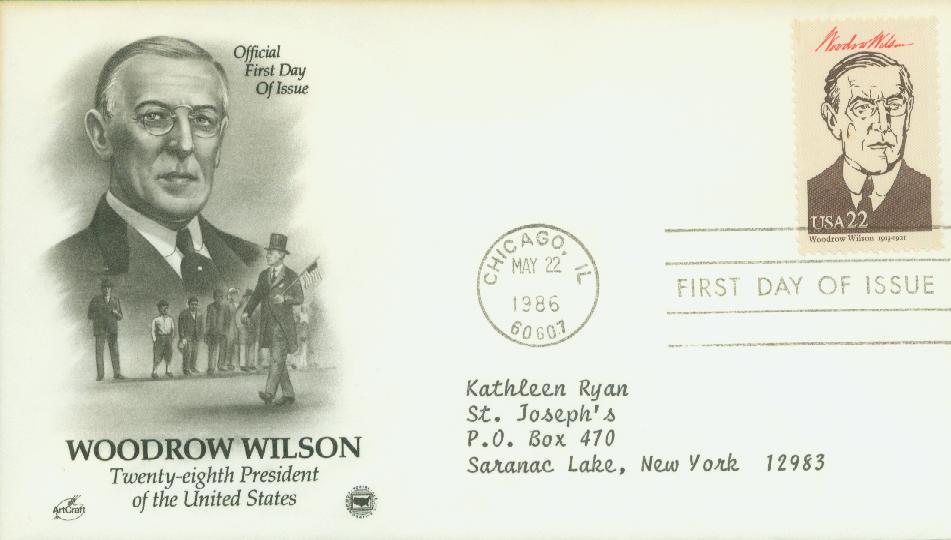
President Wilson soon found it difficult to maintain America’s neutrality, especially after a British passenger liner had been sunk with Americans on board. The tide turned, however, when the US intercepted a telegram sent to the German ambassador in Mexico City promoting a Mexican attack on America.
On April 2, 1917, President Wilson addressed Congress with a declaration of war, stating that the war overseas had become a threat to humanity. He referred to it as a “war to end all wars” hoping it would result in lasting peace. The US soon raised a large army, due in part to the draft.
The following January, Wilson again addressed Congress, delivering his now-famous “Fourteen Points” speech, outlining America’s war goals. It also suggested the creation of a peacemaking organization, which would eventually become the League of Nations.
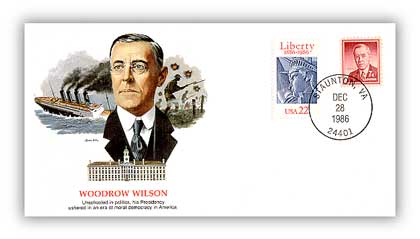
When the Great War ended, President Wilson attended the Paris Peace Conference, making him the first President to visit Europe while in office. He pushed for many of the ideas in his “Fourteen Points” speech and supported the League of Nations at the Treaty of Versailles. He then had to return to America to get Senate approval on the treaty. With the Senate split on the issue, Wilson set out on a cross-country speaking tour to get national support. However, mere weeks into his journey he suffered a debilitating stroke that paralyzed his left side. No one aside from his wife and doctor knew the full extent of his condition for several years. Wilson’s second wife, Edith, served as his steward, deciding which issues to bring to his attention and which ones to pass on to other members of the cabinet. Over time, Wilson was able to attend cabinet meetings but was never able to perform as he had done prior to the stroke.
Wilson and his wife left the White House in 1921, retiring to an elegant house in the Embassy Row of Washington, DC. He attended just two state occasions during his retirement and gave his last national address the day before Armistice Day in 1923. The following day he delivered a brief speech before 20,000 people gathered outside his home. After suffering another stroke, he died on February 3, 1924. Wilson is the only President buried in the nation’s capital, laid to rest in Washington National Cathedral.
U.S. #832b
$1 Wilson
1938 Presidential Series
Printed: 1951
City: Washington, DC
Quantity: 160,000 - 400,000 (estimate)
Printed by: Bureau of Engraving and Printing
Printing Method: Flat plate
Perforations: 11
Color: Purple and black
Get the ONLY U.S. Postage Stamp
Printed on Internal Revenue Paper
In 1938, the Presidential Series was printed for the first time. Sixteen years later, prominent U.S. stamp collector and dealer S. Kellogg Stryker discovered an unusual stamp error. He found a $1 Woodrow Wilson Presidential Series stamp with a United States Internal Revenue (USIR) watermark. Stryker was so fascinated with this stamp, he spent much of his career searching for more, eventually owning about 400 copies of U.S. #832b.
A Philatelic Mystery Even Today...
It turns out a small number of $1 Wilson stamps produced in 1951 were accidentally printed on USIR-watermarked paper. This paper was intended for U.S. Internal Revenue tax stamps only. How the paper was mistakenly used remains a mystery, as is the exact number of error stamps printed. Many were used and discarded, limiting the number available to collectors today.
The “Prexies” Were Created by Franklin Roosevelt –
The Stamp-Collecting President
The Presidential Series of thirty-two definitive or “regular” issue stamps featured U.S. Presidents in order of their terms in office, from George Washington through Calvin Coolidge. It was the first time all the deceased Presidents were represented in a set. We owe the idea for the series to America’s stamp-collecting President, Franklin D. Roosevelt.
During his time in the White House (1933 to 1945) President Roosevelt personally approved each of the more than 200 stamps issued. That was quite a feat, as during those 12 turbulent years America struggled through the Great Depression and fought in World War II. Yet FDR suggested stamp topics, designed stamps, rejected stamp proposals, encouraged changes in laws concerning picturing stamps in catalogs and albums, created many philatelic firsts and more.
Get a FREE Mount and Album Page
to Protect and Display Your New Stamp Treasure
A stamp as rare and sought-after as the #832b deserves a safe home. That’s why you’ll receive an album page and protective mount absolutely free. The album page will fit your Heritage or other Mystic-produced three-ring binder and features the story behind this stamp. The crystal-clear archival-quality mount will make the stamp details and colors “pop” and will make adding it to your new album page a breeze.
Birth Of Woodrow Wilson

Thomas Woodrow Wilson was born on December 28, 1856, in Staunton, Virginia, the third of four children.
Wilson’s family fiercely defended the Confederate cause, but also set up a Sunday school for their slaves. Reportedly, one of Wilson’s earliest memories was hearing Robert E. Lee say that Abraham Lincoln had been elected and that war was coming.
Wilson attended Davidson College in North Carolina and then Princeton here took great interest in studying political philosophy and history. As a student at Princeton, Wilson served as speaker of the Whig Party, wrote for the Nassau Literary Review, organized the Liberal Debating Society, and coached another debating group.

In 1882, Wilson passed the Georgia bar and opened his own law practice with a former classmate. He soon found the law practice was too competitive in the city and felt it was holding him back from his real aspirations to join politics. So in 1883, he entered Johns Hopkins University to study political science.
By 1886, Wilson had earned his PhD and briefly worked as a visiting lecturer at Cornell University. He went on to teach at Bryn Mawr College and Wesleyan University, where he coached football and started a debate team. In 1890, Wilson began teaching at Princeton. At that time, he also became the first lecturer of Constitutional Law at New York Law School. His stirring speech at Princeton’s 1896 sesquicentennial celebration was titled “Princeton in the Nation’s Service,” which became the university’s motto (and was later changed to “Princeton in the Nation’s Service and in the Service of All Nations”). In 1902, Wilson was promoted from professor to president of Princeton University. He took great joy in this role and made major reforms to the school.
With the support of the state’s Democratic Party, Wilson was elected Governor of New Jersey in 1910, winning by more than 49,000 votes. Within six months of taking office, he established state primaries, essentially removing party bosses from the presidential election process in the state. He also reformed the public utility commission and created workers’ compensation in the state.

Quickly gaining national fame for his work as governor, Wilson sought the presidency in the election of 1912. He received his party’s nomination and campaigned promoting “New Freedom,” which promised to limit the federal government and fight monopolies. Wilson won the election with 41.8% of the popular vote and 435 electoral votes.
Wilson wasted no time instituting his “New Freedom” promises, addressing antitrusts, tariff reforms, and changes to banking and currency issues. President Wilson held the first modern press conference on March 15, 1913, and that year gave the first State of the Union address in person since 1801.
One of the first major issues Wilson tackled was the Federal Reserve. The resulting Federal Reserve Act of 1913 gave private banks control of the 12 regional Federal Reserve Banks but placed controlling interest in a central board selected by the President, with Senate approval. The plan was passed that December and went into effect in 1915.
Tariff reform came with the Underwood Tariff in 1913. Wilson raised public support for the tariff by denouncing corporate lobbyists, addressing Congress in person, and putting on a large ceremony when he signed the bill. The reduced revenue that resulted from the lower tariff was made up through a new federal income tax created by the 16th Amendment.

Wilson also managed to end the long-time battle over trusts. Wilson encouraged competition through the Federal Trade Commission, which mostly put an end to unfair trade practices. He also pushed for the passage of the Clayton Antitrust Act of 1914. That act made certain business practices illegal, including price discrimination and agreements that allowed retailers to handle products of other companies.
When war broke out in Europe in 1914, President Wilson declared neutrality and aimed to keep America out of the conflict. He offered his services as a mediator, but the Allies and Central Powers never responded. On the home front, he faced criticism from Republicans, who thought he should begin building up the US Army. But Wilson believed that such actions would only provoke war.
During the election of 1916, Wilson ran with the campaign slogan, “He kept us out of war.” But after winning his party’s nomination, he warned that German submarine warfare taking American lives would not be tolerated. In November, Wilson narrowly won reelection.

President Wilson soon found it difficult to maintain America’s neutrality, especially after a British passenger liner had been sunk with Americans on board. The tide turned, however, when the US intercepted a telegram sent to the German ambassador in Mexico City promoting a Mexican attack on America.
On April 2, 1917, President Wilson addressed Congress with a declaration of war, stating that the war overseas had become a threat to humanity. He referred to it as a “war to end all wars” hoping it would result in lasting peace. The US soon raised a large army, due in part to the draft.
The following January, Wilson again addressed Congress, delivering his now-famous “Fourteen Points” speech, outlining America’s war goals. It also suggested the creation of a peacemaking organization, which would eventually become the League of Nations.

When the Great War ended, President Wilson attended the Paris Peace Conference, making him the first President to visit Europe while in office. He pushed for many of the ideas in his “Fourteen Points” speech and supported the League of Nations at the Treaty of Versailles. He then had to return to America to get Senate approval on the treaty. With the Senate split on the issue, Wilson set out on a cross-country speaking tour to get national support. However, mere weeks into his journey he suffered a debilitating stroke that paralyzed his left side. No one aside from his wife and doctor knew the full extent of his condition for several years. Wilson’s second wife, Edith, served as his steward, deciding which issues to bring to his attention and which ones to pass on to other members of the cabinet. Over time, Wilson was able to attend cabinet meetings but was never able to perform as he had done prior to the stroke.
Wilson and his wife left the White House in 1921, retiring to an elegant house in the Embassy Row of Washington, DC. He attended just two state occasions during his retirement and gave his last national address the day before Armistice Day in 1923. The following day he delivered a brief speech before 20,000 people gathered outside his home. After suffering another stroke, he died on February 3, 1924. Wilson is the only President buried in the nation’s capital, laid to rest in Washington National Cathedral.









